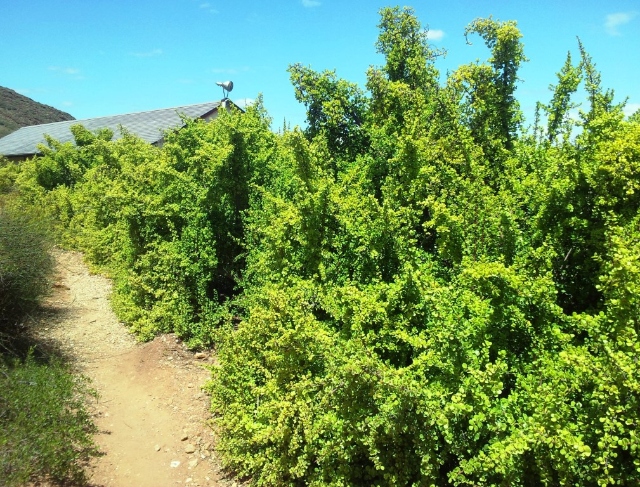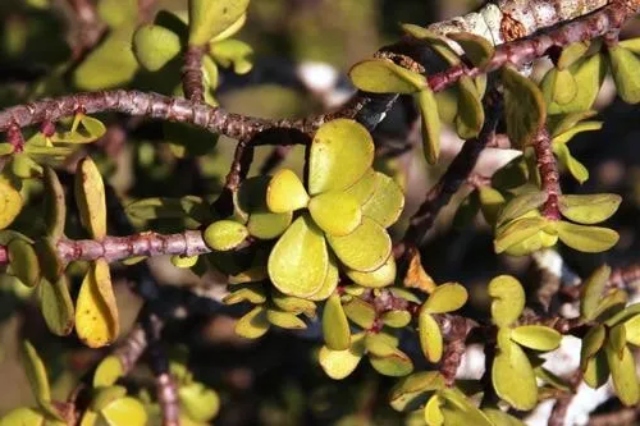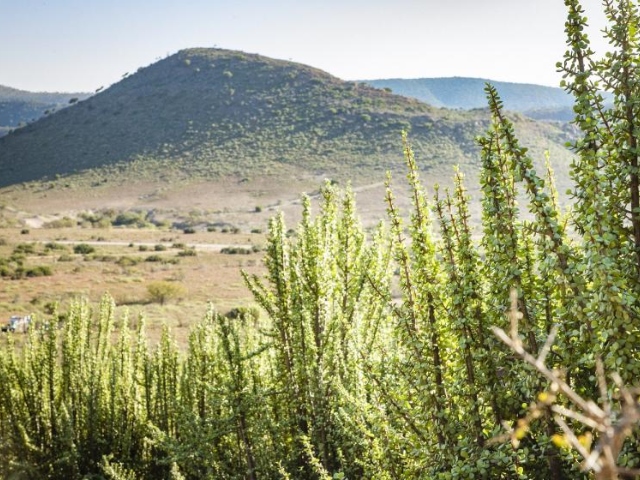
-
Why This South African Succulent Is A “Miracle Plant”
08 Mar 2024 by Tayla in Conservation, Environment, Global Warming, Lifestyle, Nature, South Africa
[imagesource:here]
A ‘miracle plant’ once dominated the dry terrain of the Little Karoo in the Western Cape.
But years of excessive grazing and poor management have decimated the shrub, along with its crucial role in providing shade to the parched earth and its ability to absorb carbon.
“The spekboom does carbon sequestration day and night. It is one of the few plants that do it,” Andre Britz told AFP on a tour to explain his ten-year-old mission as a 62-year-old Afrikaner evangelist of the nature-preserving powers of southern Africa’s spekboom shrub.
A decade ago, Britz established Jobs 4 Carbon, a nonprofit committed to reforesting and promoting the spekboom in a region ravaged by the prolonged drought from 2015 to 2020, which severely impacted farming.
“The other thing is that [spekboom] occurs here naturally,” he said. “So that was why it was important to plant spekboom here and to have that secondary effect on the change of climate.”
He currently leads a team of workers, toiling with shovels and picks amidst the rocky landscape, dedicated to fostering new plants that have the potential to once again carpet the arid soil with lush green leaves.

Image: Wikimedia Commons
Jobs 4 Carbon has already replanted almost 700 hectares (1,730 acres).
“It brings nature back to life,” team leader Jan Cloete, 49, said with a smile.
To botanist Alastair Potts, 41, in its natural semi-arid ecosystem or “subtropical thicket”, it is a “miracle plant”.
It “creates forest-like micro-environments”, a “carpet” of leaves that “trap water and dust and nutrients”, as well as carbon, he said.
The latter is stored in large quantities because of the succulent’s rare ability to swing between two types of photosynthesis. In dry, hot weather, spekboom sucks carbon dioxide out of the atmosphere at night and stores it in the form of malic acid. During the day, the plant closes its pores, called stomata, to minimise water loss and uses its night stash for photosynthesis.
This greatly boosts its capacity to capture carbon.

Image: Picturethis
While fact-checkers have debunked overenthusiastic claims that the plant rivals the Amazon rainforest in terms of carbon absorption, others say it still pulls above its weight when allowed to grow in its natural environment.
A 2006 paper estimated that one hectare of spekboom sequestered on average four tonnes of CO2 per year. Others put the figure at more than 15 tonnes.
That’s good enough in anyone’s book.
Jobs 4 Carbon aims to increase spekboom planting efforts and finance the initiative by selling carbon credits, which are purchased by companies to counterbalance their greenhouse gas emissions. However, for this to succeed, scientists need to determine precisely how much CO2 the small succulent can sequester.
Despite this challenge, Potts remains hopeful.
Spekboom doesn’t have the drawbacks of other tree-planting projects criticised for setting up monocultures in unsuitable ecosystems, he said. By restoring the environment, spekboom also helps prevent emissions from land degradation.
“I feel that carbon farming and spekboom is the perfect mix,” he said. “We’re changing the ecosystem functioning back to what it was, through carbon, which is fantastic.”
With funding from international foundations and private companies, Jobs 4 Carbon is looking to green 13,000 hectares across the region, said Britz. Potts reckons there is still so much more that can be done across the country, though.
[source:afp]
Latest News
-
Game, Seth, Match – Goodbye 2024
Hey Guys - thought I’d just give a quick reach-around and say a big thank you to our rea...
-
Breakfast Of Champions: Hollywoodbets Kenilworth Racecourse Breakfast Gallops Is Back!
[imagesource:CapeRacing] For a unique breakfast experience combining the thrill of hors...
-
Need NYE Plans? Cafe Caprice’s Night Of Enchantment Masquerade Party Could Do The Trick
[imagesource:howler] If you're still stumped about what to do to ring in the new year -...
-
Buckingham Palace Steps In After Staff Christmas Party Spirals Out Of Control
[imagesource:maxandeli/facebook] It's not just in corporate that staff parties get a li...
-
Designer Babies Are Running Into Trouble As Teens, Grappling With Being ‘Experiments’
[imagesource:here] Imagine being born with the weight of your parents’ version of per...
-






























